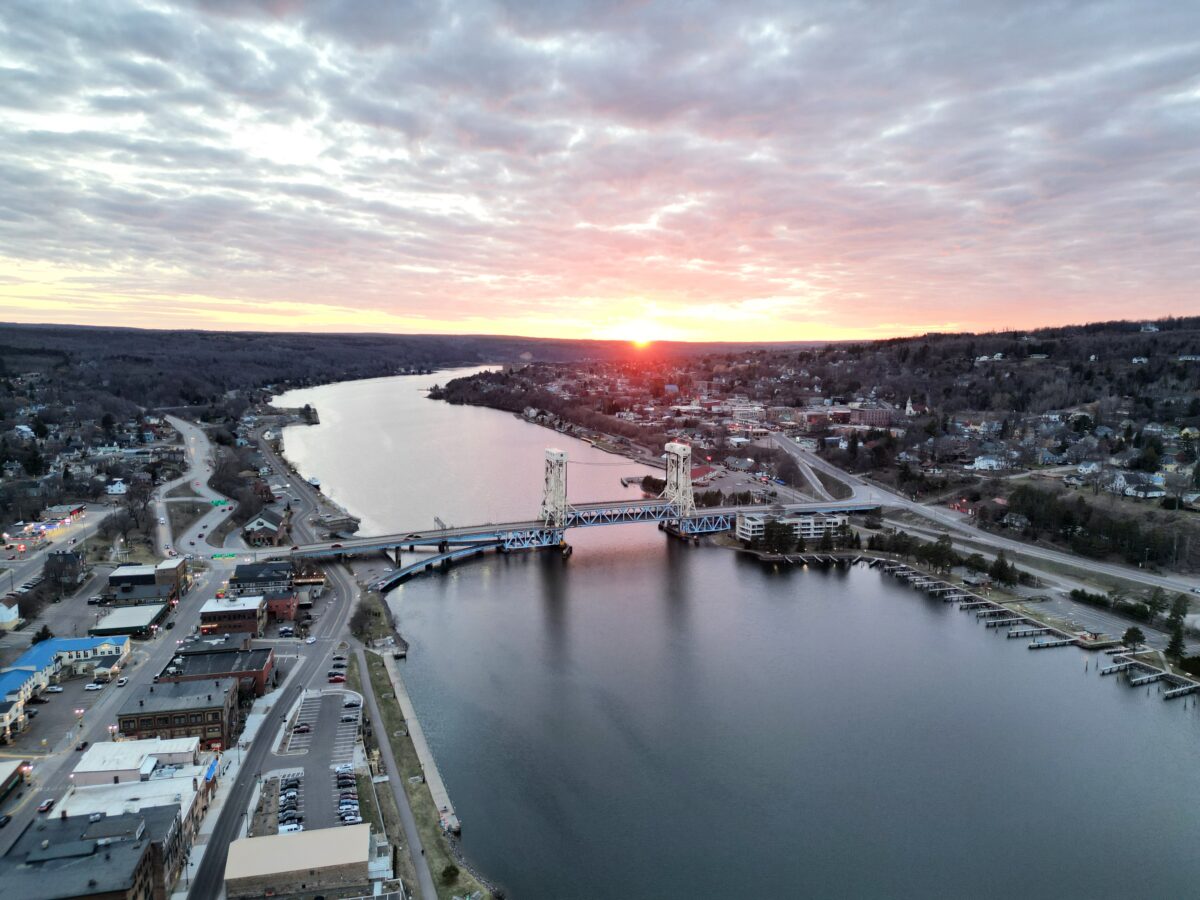A short span of water separates Michigan’s Keweenaw Peninsula from the mainland. Since 1959, the Portage Lake Lift Bridge has been the lifeline between these vital masses. However, this iconic structure has not always served as the link between these two areas.
The first crossing dates back to the mid-1800s, when settlers searched for new copper deposits. Early on, these settlers relied on ferries and a floating bridge, but as the population grew, the demand for a more efficient transportation method was needed. In 1875, a wooden swing bridge was constructed to accommodate pedestrians and carts, and in 1895, a steel swing bridge was built to help accommodate vehicles and trains. However, as the population grew, the swing bridge was deemed inefficient. In a letter written in 1952, Houghton County Road Commissioner Carl Winkler stated that the swing bridge was “unreasonably obstructive” as it was a pinch point of traffic congestion.
Construction of the current bridge began in Dec. 1957, and it faced challenges from the harsh winters. By 1959, the double-deck lift bridge had completed construction. Its impressive design supported vehicle traffic on the bridge’s upper deck and trains on the lower deck. “This design was groundbreaking,” said Dr. Tess Ahlborn, who documented the bridge’s history.
Today, the bridge supports over 30,000 vehicles daily and several snowmobilers, as the railway deck is lowered in the winter months to accommodate snowmobile traffic. The Portage Lake Lift Bridge embodies the evolution of connectivity between Houghton and Michigan’s Copper Country.





